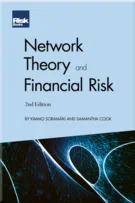Inflation Indexation and Products in Emerging Markets
Brice Bénaben and Stefania A Perrucci
Foreword
Inflation-Sensitive Assets
Investable Commodity Indexes and Inflation: A Brief History
Commodities, Inflation and Growth: Implications for Policy and Investments
Inflation and Real Estate Investments
Infrastructure Assets and Inflation
Equity Investments and Inflation
Inflation-Linked Markets
Understanding and Trading Inflation Swaps and Options
The Role of Models in Modern Monetary Policy
Term Structure of Interest Rates and Expected Inflation
Monetary Policy, Inflation and Commodity Prices
Inflation and Asset Prices
Inflation and Equity Returns
Inflation Hedging through Asset and Sector Rotation
Practical Models for Inflation Forecasting
Protecting Insurance Portfolios from Inflation
Inflation, Pensions and Liability-Driven Investment Solutions
Ultra-High-Net-Worth Investors and the Real Asset Value Chain
Inflation Markets: A Portfolio Manager’s Perspective
Inflation Indexation and Products in Emerging Markets
Emerging countries have been pioneers in the inflation market. Brazil, Israel and Iceland issued their first inflation-linked bond in 1964; Chile and Colombia issued their first in 1967. For such pioneers, issuing inflation-linked debt provided one of the few viable long-term funding options to support on-going infrastructure and agriculture projects in the backdrop of the persistent high inflation environment of the 1960s, 1970s and 1980s (Figure 20.1). This contrasts with what occurred in developed countries. At the time of writing, the latter are the largest issuers of inflation-linked debt, but their inflation-linked programmes started much later,11 The UK Government started issuing inflation-linked bonds in 1981, the US Treasury started in 1997 and France followed in 1998. and, with the exception of the UK, not as a way to counteract high inflation but in order to meet investors’ demand for stable yields and portfolio diversification.
Although emerging countries’ inflation-linked debt accounts for only 20% of the total (Figure 20.2), it grew at a rapid pace from the early 2000s onwards, especially in Latin American countries (which together comprise three-quarters of
Copyright Infopro Digital Limited. All rights reserved.
As outlined in our terms and conditions, https://www.infopro-digital.com/terms-and-conditions/subscriptions/ (point 2.4), printing is limited to a single copy.
If you would like to purchase additional rights please email info@risk.net
Copyright Infopro Digital Limited. All rights reserved.
You may share this content using our article tools. As outlined in our terms and conditions, https://www.infopro-digital.com/terms-and-conditions/subscriptions/ (clause 2.4), an Authorised User may only make one copy of the materials for their own personal use. You must also comply with the restrictions in clause 2.5.
If you would like to purchase additional rights please email info@risk.net








